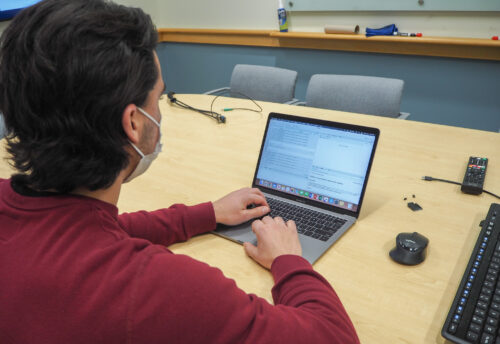Image Courtesy of Jenny Wong.
Extreme heat is something we feel acutely. Not to be confused with a sunny day, extreme heat describes those times when it is insufferably hot outside, when the heat sits heavy and stale, and the mere task of existing outside becomes a feat of endurance. As the earth warms, extreme heat events become all the more intense. Without the proper resources, this heat can be dangerous, and, in some cases, deadly.
An individual’s response to extreme heat is impacted by various factors, ranging from socioeconomic background to the specific street someone lives on. As such, some populations—especially historically marginalized groups—are more at risk in events of extreme heat. Mitchell Manware and fellow researchers at the Yale School of Public Health were left unsatisfied by prior attempts to quantify heat vulnerability, noting that they failed to create a holistic image of one’s actual risk. Thus, they created a new heat vulnerability index (HVI), which builds on past systems, but, importantly, also takes into account one’s race, ethnicity, and broader socioeconomic background.
This improved HVI covers a complex amalgamation of variables, all aimed at more fully capturing not only who is most vulnerable to heat, but also why someone is vulnerable in the first place. “The HVI combines many different variables, each having evidence to support its association with heat-related outcomes,” said Manware, the first author of the research paper in which the HVI was presented. These variables include environmental factors such as the average summertime temperature and the percentage of land covered by non-green space, as well as social factors like the percentage of the population that is Hispanic or Latino, non-Hispanic African American or Black, elderly, unemployed, or English-proficient. As a result, this index is comprehensive in a way that a heat index has never been before.
On a scale from ten to twenty-six, the HVI creates a standard of comparison for heat vulnerability, quantitatively capturing the unique vulnerability of census tracts across the country. “The HVI allows one to compare, say, New York City to Miami by including such a wide, diverse set of variables,” Manware said.
By creating this standard of comparison—using a range of variables considering more than one’s geographic location—Manware and his colleagues have created a tool that shines a critical light on systemic, environmental racism stemming from America’s past. Environmental racism in the United States, tied to a long history of redlining and current disparities in public services, is the idea that different racial and ethnic groups are disproportionately exposed to various environmental hazards—identifying where these inequities are most prominent is an integral use of this index.
“Individuals across the United States were assigned a heat vulnerability index score based on which census tract they lived in, allowing us to calculate an HVI average for eight race and ethnicity groups,” Manware said. “The non-Hispanic African American and Hispanic or Latino groups had the two highest average HVI scores, showing, again, in the whole United States, not just in one city or in one census tract, that these communities of color are disproportionately vulnerable to heat.”
Developing this index was about not only identifying the problem, but also providing a starting point to inform and motivate climate activism. “Creating a website that was publicly available, and interactive, is a way to try and translate research into practice,” Manware said. “We didn’t want this paper just to sit and exist in some database: we wanted it to be seen and used by elected officials and regular citizens alike.”
As the earth continues to warm, taking steps to combat climate change and mitigate its effects will become increasingly vital. The HVI is a remarkable tool that lays the groundwork for the equitable implementation of climate change policy. “Given the scale and the inevitability of climate change, it will take a collective effort to do what we can to mitigate its effects and adapt to the changes that have already happened,” Manware said. It will indeed take a collective effort to address climate change, and it can only be the hope that as climate change policy is implemented, there is a concern for the equitable distribution of resources to offset the history of environmental inequity in the United States.

